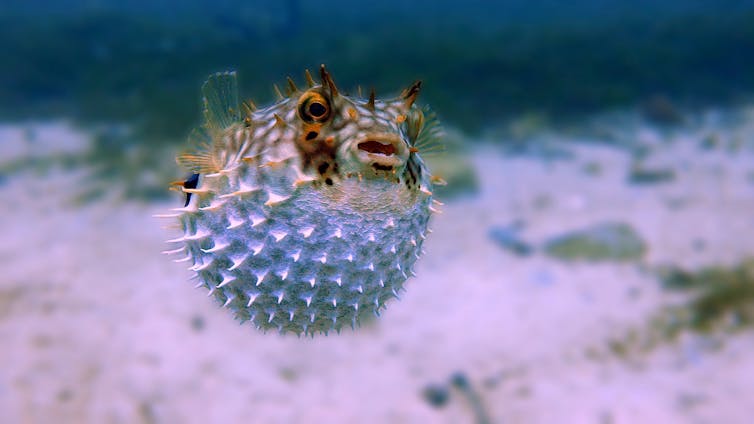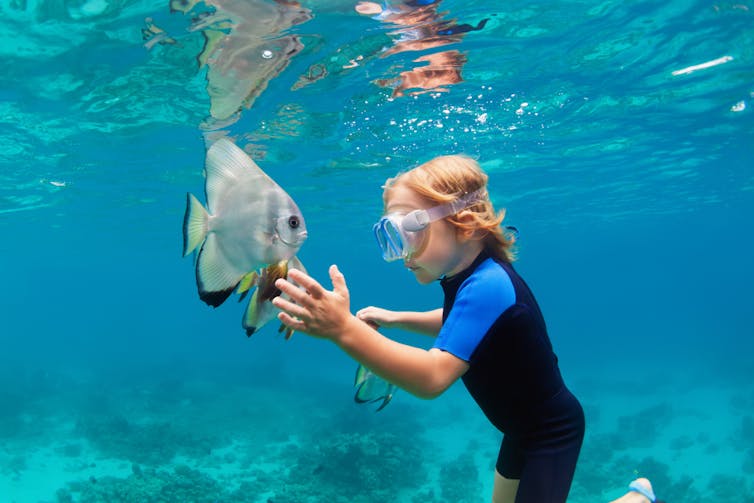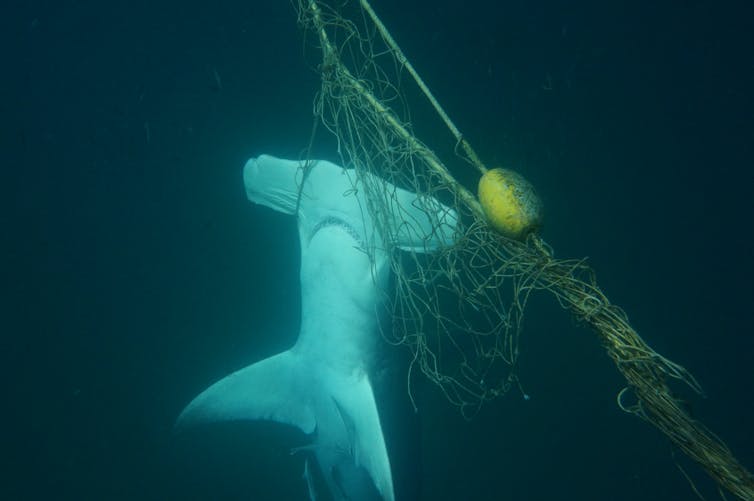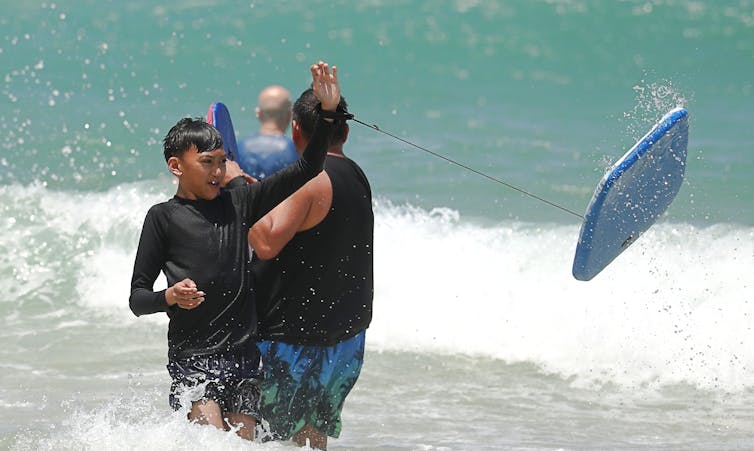January 15 - 21 2023: Issue 567
‘More Potent Than Cyanide’: How To Stay Safe From Blue-Ringed Octopus This Summer + When We Swim In The Ocean, We Enter Another Animal’s Home: Here’s How To Keep Us All Safe
‘More potent than cyanide’: how to stay safe from blue-ringed octopus this summer

As an octopus biologist, I get a call from the media every summer because someone has had an encounter with a blue-ringed octopus. Thankfully, everyone has been OK.
Blue-ringed octopus are famed for being one of the most venomous animals on the planet, and the symptoms from a bite are the stuff of nightmares. But how worried do you need to be?
1,000 Times More Powerful Than Cyanide
It’s a common myth that blue-ringed octopus are found only in the tropics. These tiny marine animals are, in fact, found all around Australia, including Tasmania.
There are three official species in Australia, with a maximum size ranging from 12 to 22 centimetres, and they are all extremely venomous. There are also many scientifically “undescribed” species, which have yet to be named and officially added to the blue-ringed family.
The venom of blue-ringed octopus contains tetrodotoxin, a potent neurotoxin claimed to be a thousand times more potent to humans than cyanide.

First discovered in pufferfish, tetrodotoxin is actually found in more than 100 species including the Panamanian golden frog and rough-skinned newt. But levels of the toxin varies hugely between species, and levels in blue-ringed octopus are high.
Surprisingly, scientists are debating where blue-ringed octopus and other marine animals source their tetrodotoxin. One theory is that it’s produced by bacteria that live inside the host species, the other is that it’s sourced from the diet.
Most of these animals use tetrodotoxin for defence, but blue-ringed octopus also use it to hunt and kill their prey, such as fish and crabs.

Are Blue-Ringed Octopus Proliferating?
The media often report spikes or record numbers in blue-ringed octopus sightings.
While we don’t have the long-term data to confirm this, the populations of some octopus species are increasing. For example, there are reports the common European octopus is proliferating in France right now.
Octopus are short-lived – the blue-ringed octopus only lives for a few months – and are highly responsive to changing environmental conditions.
Hypothetically, some human-made habitats, such as breakwalls and lobster pots, or marine litter, such as bottles and cans, could be providing additional habitat for blue-ringed octopus. Likewise, climate change could confer an advantage to some octopus species that can better adapt to warming waters.
But we simply do not know if this is the case for blue-ringed octopus. Octopus populations may also undergo natural “boom and bust” cycles in response to fluctuations in temperature, food, and other factors in their environment, resulting in rapid increases and decreases in population numbers.
How To Keep Safe
Blue-ringed octopus deliver venom by biting using their parrot-like beak, which is found at the base of the arms.
Blue-ringed octopus bites are rare – they are docile, shy animals and are not interested in people. But they may bite when they are threatened or provoked, so NEVER, EVER pick them up.
And remember, these octopus only flash their characteristic blue rings when upset, so stay clear of any small octopus, no matter what they look like.
Blue-ringed octopus are found in shallow coastal waters, including the foreshore, so accidental encounters do happen. Their preferred habitats include rocky reefs and coral reefs, seagrass and algal beds, and rubble. Given they’re found throughout the Indo-West Pacific, you may encounter them while on holiday.

Be careful exploring rock pools, cracks or crevices, or picking up empty shells or bottles at the beach, where the octopus may make a home or den, or even when retrieving fishing gear, such as octopus pots or lobster pots.
Curious, young children may also be at risk of an encounter as they explore the beach environment – I know my own toddler would seek out the ideal octopus habitat if given a chance.
This month also, many dead blue-ringed octopus were found on the beach after a mass death event of marine critters in South Australia. It’s best not to pick them up as they could be dying and stressed. Please also keep pets and young children well away as ingestion could lead to poisoning.
What To Do If Bitten, And Symptoms To Watch For
All three blue-ringed octopus species in Australia have killed people, but cases are extremely rare. The severity of symptoms depends on how much venom someone receives.
A mild case of envenomation may result in tingling around the mouth and mild weakness. A severe case may lead to flaccid paralysis (weak or limp muscles), including respiratory paralysis and the inability to breathe.
A tricky thing with blue-ringed octopus is that bites may be painless, so people can be unaware they have been bitten. But the onset of symptoms can be rapid (within minutes) and so an equally rapid first-aid response is crucial.
If you believe someone has been bitten by a blue-ringed octopus, remove them from water immediately and seek urgent medical care. You do not need to put anything on the bite, such as vinegar or hot water. Rather, pressure bandaging and immobilisation is recommended, as for snake bites.
If the envenomation is severe, first aid is also focused on providing basic life support, particularly breathing support. Full first aid response details can be found here and here.
Importantly, undertaking a first-aid course may help equip you with some of the skills to support a person who has been bitten before medical help arrives.
While there is no antivenom available for a blue-ringed octopus bite, the venom has short-lived effects (usually hours).
At the end of the day, enjoy the ocean. But if you see any small octopus, whatever you do, do not pick it up.
The author gratefully acknowledges clinical toxinologist, Professor Julian White AM (Women’s & Children’s Hospital, Adelaide), who provided advice on this article.![]()
Zoe Doubleday, Marine Ecologist and ARC Future Fellow, University of South Australia
This article is republished from The Conversation under a Creative Commons license. Read the original article.
When we swim in the ocean, we enter another animal’s home. Here’s how to keep us all safe

Every summer, many Australians head to the ocean to swim, surf, sail, kayak, and walk along the beach.
But humans are not alone when we use the ocean. Fish, seals, dolphins, sharks, jellyfish, turtles, stingrays, cuttlefish, and birds often swim alongside us. When we enter the ocean we become part of an entangled web of animal relationships.
Encountering animals when we swim and surf in the ocean is fun and exciting. But sharing the water with animals also comes with the risk of stings, bites, frights, and injury to us. It can also bring harm to ocean wildlife.
By educating ourselves about marine life, humans can minimise risks to ourselves and the animals who call the ocean home.
We Can Frighten Animals – And They Can Scare Us
Despite how vulnerable we feel when swimming, our presence in the ocean can frighten or harm an animal. Animals may see us as a predator and alter their behaviour accordingly.
Fish, birds and small stingrays might swim off, and turtles might delay rising to the ocean’s surface to breathe.
Not all animals are frightened of humans. It’s a highlight when curious dolphins swim and play around us. But dolphins can attack humans or other animals if they feel threatened - for example when feeding or protecting their young.
Humans can also be scared of animals in the water. This fear drives the use of shark nets off beaches or, less commonly, shark culls.
Shark nets are controversial – not least because they can entangle and kill animals including turtles, non-target sharks, stingrays, and whales.
Even more controversial are shark culls, such as those planned for Western Australia in 2013 after a spate of fatal shark attacks. The plan was later abandoned, after it was criticised as cruel and lacking scientific basis.
Killing or harming ocean animals so humans can have fun in the water raises all sorts of questions and moral dilemmas. So how else might we keep ourselves safe in the ocean?

Learn About Ocean Animals
Learning about what ocean animals you might encounter – and when – can help keep both people and animals safe.
Some animals are present year-round. But, as whale watchers and fisherman are well aware, many animals are more active in a particular seasons or only appear at certain times of the year.
For example, in cooler months in the waters off northern Australia, manta rays are most active. Leopard sharks, meanwhile, appear during warmer months in southeast Queensland and northeast New South Wales.
And from November until May or June, a variety of marine stingers can be found in the coastal waters of Far North Queensland. These include the potentially lethal box jellyfish.
Informing ourselves means we can take measures to keep safe. For example, people swimming in North Queensland in the warmer months are advised to swim at netted beaches, and wear wetsuits or stinger suits. Entering the water slowly also gives some marine stingers time to move away.

When it comes to sharks, there are growing calls to adopt non-violent approaches to minimise risks to humans. This could include public education on, for example, links between fish seasons and shark activity.
Educating ourselves about ocean animals also helps us protect them.
Shorebirds, for instance, nest in spring and summer. This is prime beach time for people, too. Shorebird nests are shallow and vulnerable, and birds will often abandon their eggs when humans are around. Dogs and 4WDs pose an even bigger threat.
If we know we’re sharing a beach with nesting shorebirds, we can take steps to ensure their safety, such as keeping our dogs on a leash and avoiding using dunes and other common nesting areas.
The annual migration of whales and their calves up and down our coasts is an exciting time to visit the beach and, if you’re lucky, to view a splashy show of breaching or water slapping.
But if you plan to go sailing or kayaking, be aware of rules around interacting with whales. They law states they can approach us, but we must not get too close to them.
If you’re not an experienced ocean user, or don’t know about the animals living in a particular place, talk to someone who is informed.
If you use beaches patrolled by surf lifesavers they can give you information about animals that might be present that day, such as sharks or jellyfish. They can also tell you about ocean conditions such as rips, currents and water quality.
If you do suffer a painful bluebottle or jellyfish sting, surf lifesavers may also provide basic treatments such as dousing the sting with hot water or vinegar.
If you’re planning to swim or surf at unpatrolled beaches – especially if they’re remote – pack a basic first aid kit including sunscreen, vinegar and instant ice packs.
And remember, enjoying time in the ocean with other poeple is safer than swimming alone.

Ensuring Everyone Enjoys The Encounter
Despite the risks, most human encounters with animals in the ocean are exciting and positive.
Learning about the kinds of animals you might come across, as well as the best ways to interact with them, will help keep you safe – and make sure its a good experience for the animals too.![]()
Rebecca Olive, Vice Chancellor's Senior Research Fellow, RMIT University
This article is republished from The Conversation under a Creative Commons license. Read the original article.